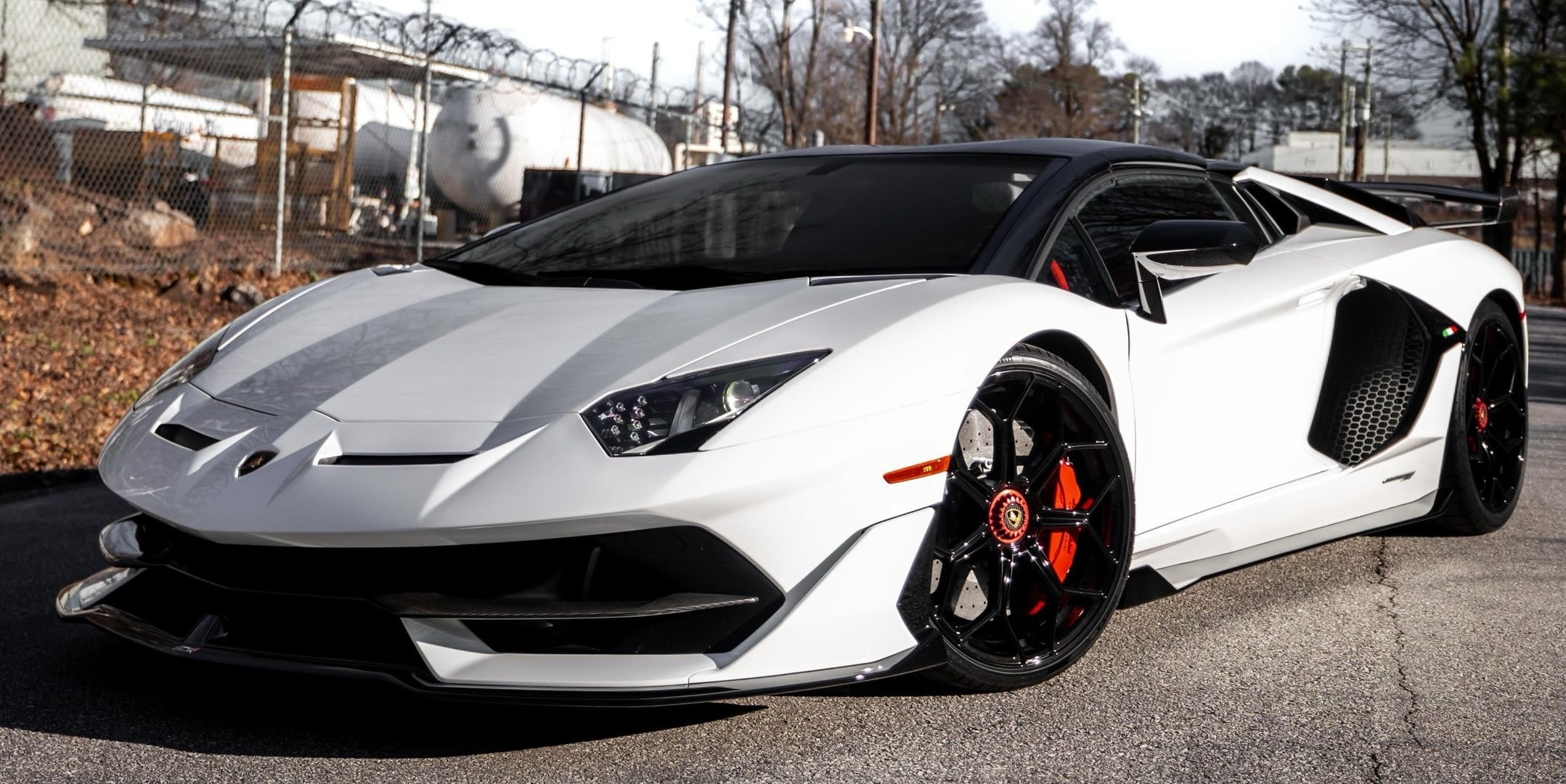In today’s automotive landscape, fuel efficiency has become more than just a consideration; it’s a defining factor that influences purchasing decisions, environmental impact, and long-term ownership costs.
The automotive industry presents a fascinating dichotomy between vehicles that sip fuel with remarkable restraint and those that consume gasoline with unapologetic excess.
This comprehensive analysis explores both ends of this spectrum, examining five hybrid vehicles that excel in cold-start fuel efficiency and five notorious gas guzzlers that represent the opposite extreme.
The importance of cold-start fuel consumption cannot be overstated, particularly for hybrid vehicles. During cold starts, internal combustion engines operate less efficiently as they warm up, requiring richer fuel mixtures and generating higher emissions.
Hybrid systems have evolved to address this challenge through sophisticated battery management, instant electric motor assistance, and advanced thermal management systems.
The best hybrid vehicles minimize fuel consumption during these critical initial moments by leveraging electric power while the gasoline engine reaches optimal operating temperature.
On the opposite end of the spectrum lie vehicles that prioritize performance, luxury, or capability over fuel efficiency. These gas guzzlers, while often delivering exceptional power, comfort, or utility, consume fuel at rates that can exceed $4,000 annually in fuel costs alone.
Understanding both extremes provides valuable insight into the engineering compromises and consumer priorities that shape today’s automotive market, helping buyers make informed decisions that align with their values, needs, and financial considerations.
5 Hybrids with Lowest Cold-Start Fuel Consumption
These exceptionally efficient hybrid powertrains feature sophisticated thermal management systems and battery-assisted operation that dramatically reduce cold-start fuel consumption during those crucial first minutes of operation.
Their advanced lithium-ion battery packs work in conjunction with compact four-cylinder engines, allowing electric motors to handle initial propulsion while the gasoline engine warms up gradually without fuel-rich mixtures.
Modern hybrid systems utilize intelligent engine management algorithms that can often run purely on battery power for the initial moments of operation, essentially eliminating cold-start fuel penalties entirely while maintaining cabin comfort and drivability.
The seamless integration between electric and gasoline power means these vehicles barely register any fuel consumption during the critical first few minutes when conventional engines are at their thirstiest. Owners consistently report minimal fuel usage during winter months, with some achieving near-electric efficiency for short trips that never fully engage the combustion engine.
1. Toyota Prius (2024-2025)
The Toyota Prius remains the undisputed champion of hybrid fuel efficiency, representing decades of refinement in hybrid technology. The Toyota Prius achieves 57 mpg combined, making the current model the efficiency king in the segment, with even the all-wheel-drive variant maintaining exceptional fuel economy.
The Prius’s superiority in cold-start conditions stems from its sophisticated Hybrid Synergy Drive system, which has been perfected through multiple generations of development.
The latest Prius features a completely redesigned architecture that maximizes electric-only operation during initial startup phases. The vehicle’s thermal management system preconditions the engine block using waste heat from the hybrid battery, reducing the time needed for the gasoline engine to reach optimal operating temperature.
This innovation is particularly crucial during cold starts, where traditional vehicles consume up to 40% more fuel than during warm operation. The Prius’s electric motor provides instant torque, allowing the vehicle to move efficiently while the gasoline engine gradually warms up in the background.
Toyota’s engineers have implemented a sophisticated battery management system that maintains optimal charge levels even in extremely cold conditions.
The nickel-metal hydride battery pack, although older technology compared to lithium-ion alternatives, offers exceptional reliability and performance consistency across a wide range of temperatures.
During cold starts, the system prioritizes electric-only operation for the first few minutes, completely eliminating fuel consumption during the most inefficient phase of engine operation.

The aerodynamic profile of the new Prius, with its remarkably low 0.24 coefficient of drag, contributes significantly to its efficiency during all driving conditions.
This aerodynamic advantage becomes particularly pronounced during cold weather driving, where increased air density would otherwise create additional resistance.
The vehicle’s regenerative braking system captures energy that would typically be lost, continuously replenishing the battery pack and extending electric-only operation periods.
Interior heating represents a significant challenge for hybrid vehicles during cold starts, as traditional vehicles rely on engine waste heat. The Prius addresses this through an innovative heat pump system that efficiently warms the cabin while minimizing impact on fuel economy.
This system can extract heat from the ambient air even at temperatures as low as -10°F, reducing the need for supplemental electric heating that would drain the hybrid battery.
The Prius’s predictive energy management system learns driving patterns and environmental conditions, optimizing the hybrid powertrain’s behavior for maximum efficiency.
During regular commutes, the system anticipates cold start conditions and pre-conditions the vehicle’s systems accordingly. This intelligent approach to energy management ensures that fuel consumption remains minimal even during the most challenging operating conditions.
Recent updates to the Prius have included improved insulation materials and thermal barriers that help retain engine heat during short stops, reducing the frequency of true cold starts.
The vehicle’s start-stop system is more sophisticated than competitors, maintaining electric accessory operation while the engine cycles off, ensuring that cabin comfort and safety systems remain fully functional without requiring engine restart.
2. Hyundai Elantra Hybrid (2024-2025)
The Hyundai Elantra Hybrid scores high in all categories, achieving more than 50 mpg for city and highway driving, establishing itself as a remarkable achievement in affordable hybrid technology.
The Elantra Hybrid represents Hyundai’s commitment to making advanced fuel-saving technology accessible to mainstream consumers without sacrificing comfort, features, or driving dynamics.
The Elantra Hybrid’s cold-start efficiency results from Hyundai’s innovative Smartstream technology, which combines a highly efficient 1.6-liter Atkinson-cycle engine with a permanent magnet synchronous electric motor.
This combination produces 139 total system horsepower while achieving exceptional fuel economy figures that rival much more expensive hybrid systems.
The electric motor’s instant availability means the vehicle can begin moving immediately upon startup, while the gasoline engine warms up gradually without impacting initial fuel consumption.
Hyundai’s thermal management strategy for the Elantra Hybrid includes active grille shutters that close during cold starts to accelerate engine warm-up while maintaining optimal aerodynamics once operating temperature is reached.
The system also incorporates a sophisticated coolant circulation strategy that directs warm coolant to critical engine components first, ensuring rapid achievement of optimal operating conditions. This approach significantly reduces the extended warm-up period typical of conventional vehicles.
The lithium-ion polymer battery pack in the Elantra Hybrid maintains consistent performance across a wide temperature range, thanks to advanced battery thermal management.
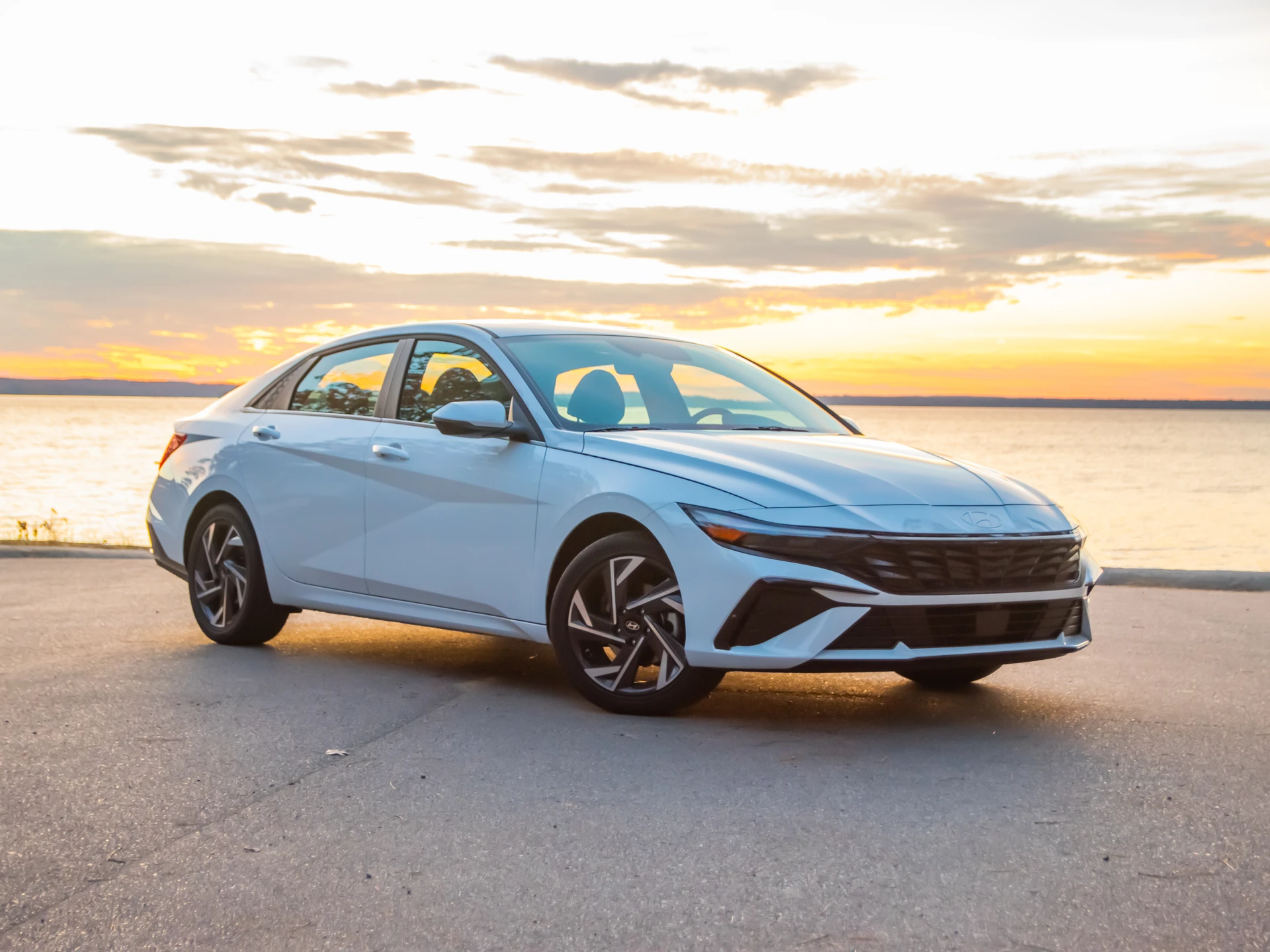
During cold conditions, the system provides battery preheating to ensure optimal electric motor performance from the moment of startup. This preheating occurs using energy stored in the battery itself, creating a self-sustaining system that doesn’t require external power sources.
One of the most impressive aspects of the Elantra Hybrid’s efficiency is its seamless integration of electric and gasoline power during cold starts. The vehicle’s control algorithms prioritize electric-only operation for initial acceleration, gradually introducing gasoline engine power as the engine reaches optimal temperature.
This graduated approach ensures that fuel consumption remains minimal during the critical first minutes of operation. The Elantra Hybrid features an advanced route-based energy management system that can predict upcoming driving conditions based on navigation input and historical data.
When cold start conditions are anticipated, the system optimizes battery charge levels and thermal conditioning to maximize electric-only operation capability. This predictive approach can extend electric-only operation by up to 30% compared to reactive systems.
Interior climate control in the Elantra Hybrid utilizes residual heat from the hybrid system’s power electronics, reducing the demand for supplemental heating during cold starts.
The system can maintain comfortable cabin temperatures while minimizing impact on fuel economy, a crucial consideration for vehicles operating in cold climates.
The heated steering wheel and seats provide immediate comfort without requiring full cabin heating, further reducing energy demands during cold starts.
The vehicle’s regenerative braking system is particularly effective during cold weather conditions, when increased rolling resistance and air density provide additional opportunities for energy recovery.
The system’s sophisticated control algorithms ensure that regenerative braking remains effective even when battery temperatures are suboptimal, continuously replenishing the energy reserves needed for electric-only operation.
3. Honda Civic Hybrid (2024-2025)
Honda’s return to the Civic Hybrid represents a masterclass in efficient hybrid integration, combining the reliability and practicality of the Civic platform with Honda’s advanced two-motor hybrid system.
The Civic Hybrid achieves exceptional cold-start efficiency through Honda’s innovative approach to hybrid system design, which prioritizes electric motor operation during the most fuel-intensive phases of vehicle operation.
The Honda Civic Hybrid utilizes the company’s proven Intelligent Multi-Mode Drive (i-MMD) system, which differs fundamentally from traditional hybrid approaches.
Rather than using the electric motor primarily to assist the gasoline engine, the i-MMD system operates as an electric vehicle with range extension capability.
During cold starts, this architecture allows the Civic Hybrid to operate purely on electric power for extended periods, eliminating fuel consumption until optimal engine operating conditions are achieved.
Honda’s approach to thermal management in the Civic Hybrid includes sophisticated engine block heating that utilizes waste heat from the hybrid system’s power electronics.
This innovative heat recovery system accelerates engine warm-up while simultaneously cooling critical hybrid components, creating a synergistic relationship that improves overall system efficiency. The result is significantly reduced cold-start fuel consumption compared to conventional vehicles or even traditional hybrid systems.
The Civic Hybrid’s lithium-ion battery pack features advanced thermal conditioning that maintains optimal operating temperature even in extreme weather conditions.
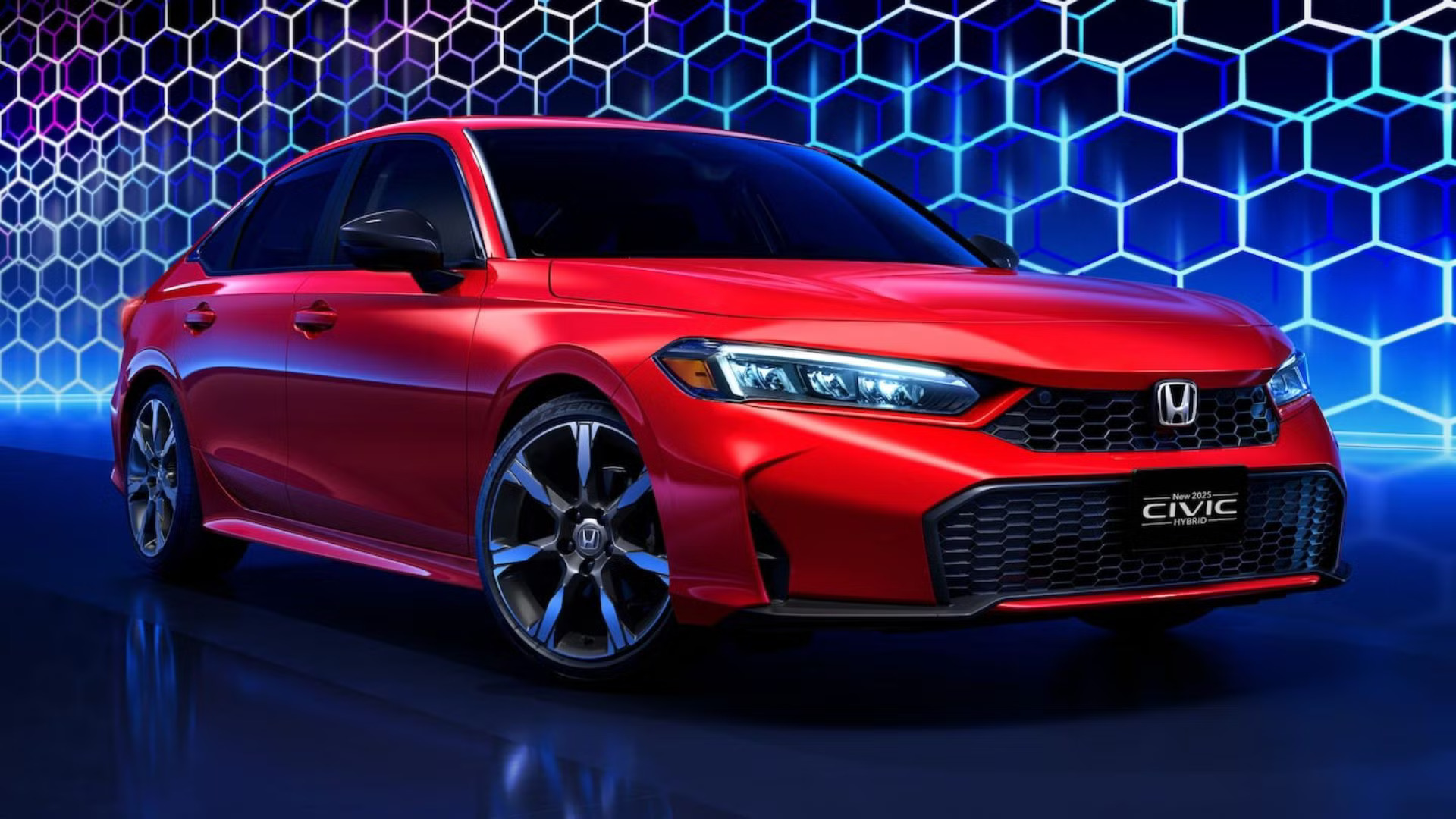
The system includes both heating and cooling capabilities, ensuring that electric motor performance remains consistent regardless of ambient temperature.
During cold starts, the battery management system prioritizes maintaining sufficient charge for extended electric-only operation, allowing the gasoline engine to warm up without load.
One of the most significant advantages of the Civic Hybrid’s design is its ability to operate in electric-only mode at highway speeds under certain conditions.
This capability is particularly valuable during cold starts, where the vehicle can maintain electric operation for several miles while the engine gradually reaches operating temperature.
The seamless transition between electric and hybrid operation ensures that passengers never experience the performance compromises typical of cold engine operation.
The Civic Hybrid incorporates predictive energy management that learns from driving patterns and environmental conditions. The system can anticipate cold start requirements and optimize battery charge levels accordingly.
On cold mornings, the system may maintain higher battery charge levels to extend electric-only operation, while also pre-conditioning the engine thermal systems to minimize warm-up time when gasoline power becomes necessary.
Honda’s innovative transmission design eliminates the traditional transmission inefficiencies that plague many hybrid systems. The Civic Hybrid uses a single-speed reduction gear for electric operation and a lock-up clutch for direct engine connection at highway speeds.
This simplified approach reduces mechanical losses and allows for more precise control of power delivery during cold start conditions. The vehicle’s advanced aerodynamics contribute significantly to cold-start efficiency by reducing the power requirements for initial acceleration.
The Civic Hybrid’s refined body design minimizes wind resistance, allowing the electric motor to move the vehicle efficiently while using minimal battery energy.
This aerodynamic advantage is particularly pronounced during cold-weather driving, where increased air density would otherwise create additional resistance.
4. Toyota Camry Hybrid (2024-2025)
The 2024 Toyota Camry Hybrid puts many Toyota attributes, reliability, and fuel economy into one excellent midsize sedan, representing the perfect marriage of size, comfort, and efficiency in the competitive midsize sedan segment.
The Camry Hybrid’s exceptional cold-start performance results from Toyota’s continuous refinement of hybrid technology, now in its fourth generation of development.
The Camry Hybrid utilizes Toyota’s latest Hybrid Synergy Drive system, featuring a 2.5-liter Dynamic Force engine combined with two electric motors for a total system output of 208 horsepower.
Despite this impressive power output, the system achieves remarkable fuel efficiency through sophisticated control algorithms that prioritize electric operation during cold starts.
The system can operate in electric-only mode for up to two miles under ideal conditions, completely eliminating fuel consumption during the most inefficient phase of engine operation.
Toyota’s advanced thermal management system in the Camry Hybrid includes engine block preheating that begins the moment the vehicle is unlocked.
This proactive approach to thermal conditioning significantly reduces the time required for the gasoline engine to reach optimal operating temperature.
The system utilizes waste heat from the hybrid battery’s power electronics to begin warming critical engine components before startup, creating a more efficient warm-up process.
The Camry Hybrid’s nickel-metal hydride battery pack has been specifically tuned for cold weather performance, maintaining consistent power output even in sub-freezing conditions.
The battery thermal management system includes both passive and active heating elements that ensure optimal performance during cold starts.
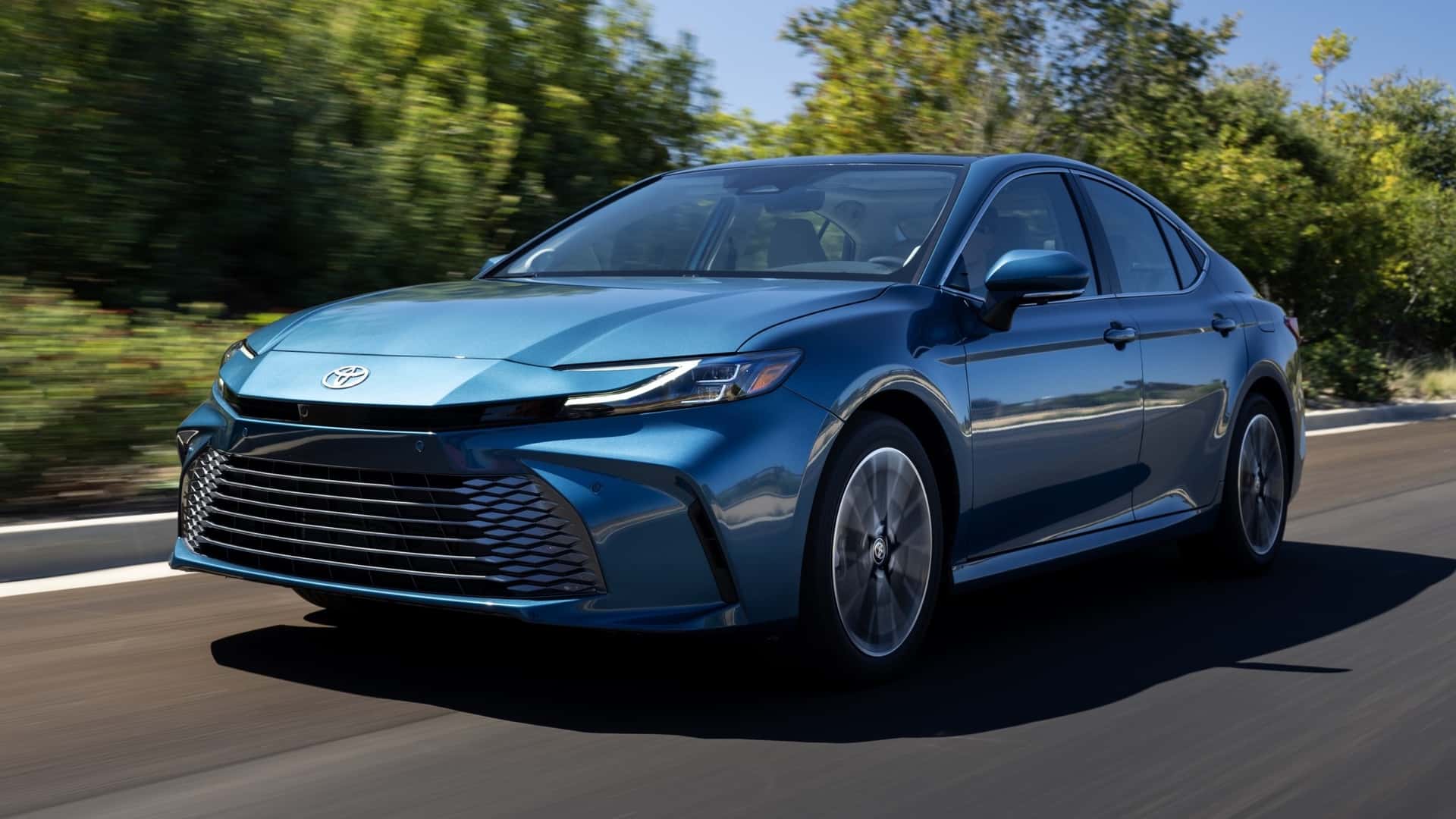
Unlike some hybrid systems that experience reduced electric capability in cold weather, the Camry Hybrid maintains full electric motor performance across all temperature ranges.
One of the most impressive aspects of the Camry Hybrid’s efficiency is its intelligent climate control system, which can maintain cabin comfort while minimizing impact on fuel economy during cold starts.
The system utilizes a heat pump configuration that can extract ambient heat even in very cold conditions, reducing the need for electric heating that would drain the hybrid battery. Heated seats and steering wheel provide immediate comfort without requiring full cabin heating.
The Camry Hybrid features an advanced predictive energy management system that utilizes GPS data and learned driving patterns to optimize hybrid system operation.
When cold start conditions are anticipated, the system can pre-condition the battery pack and thermal systems to maximize electric-only operation capability. This predictive approach can extend electric-only operation by up to 40% compared to reactive systems.
Toyota’s sophisticated aerodynamic package for the Camry Hybrid includes active aerodynamic elements that optimize airflow during different driving conditions. During cold starts, the system prioritizes minimal aerodynamic drag to reduce power requirements for initial acceleration.
The vehicle’s underbody panels and optimized wheel wells contribute to exceptional aerodynamic efficiency that becomes particularly valuable during cold weather driving.
The regenerative braking system in the Camry Hybrid has been calibrated specifically for cold weather operation, maintaining energy recovery effectiveness even when brake components are cold.
The system’s advanced control algorithms ensure that regenerative braking remains smooth and predictable during cold starts, while continuously replenishing the battery pack with recovered energy. This consistent energy recovery helps maintain extended electric-only operation capability.
Also Read: 5 Used Cars That Come With Theft Insurance Benefits and 5 That Don’t Qualify
5. Kia Niro Hybrid (2024-2025)
The Kia Niro is a practical and efficient hybrid SUV with loads of advanced tech and an amazing warranty, representing an exceptional achievement in small SUV efficiency without compromising utility or features.
The Niro Hybrid’s outstanding cold-start performance demonstrates that hybrid efficiency isn’t limited to traditional sedan platforms.
The Kia Niro utilizes a sophisticated 1.6-liter GDI engine paired with a permanent magnet synchronous electric motor, producing a combined 139 horsepower while achieving exceptional fuel economy figures.
The system’s architecture prioritizes electric motor operation during initial startup phases, allowing the gasoline engine to warm up gradually without impacting fuel consumption.
This approach is particularly effective in SUV applications, where higher vehicle weight typically results in increased cold-start fuel consumption. Kia’s advanced thermal management system for the Niro includes innovative engine block heating that utilizes the hybrid system’s electrical components as heat sources.
The power inverter and electric motor generate waste heat during operation, which is captured and directed to warm critical engine components.
This heat recovery system significantly accelerates engine warm-up while improving overall system efficiency, creating a synergistic relationship between hybrid components.
The Niro’s lithium-ion polymer battery pack features sophisticated thermal conditioning that maintains optimal performance across extreme temperature ranges.
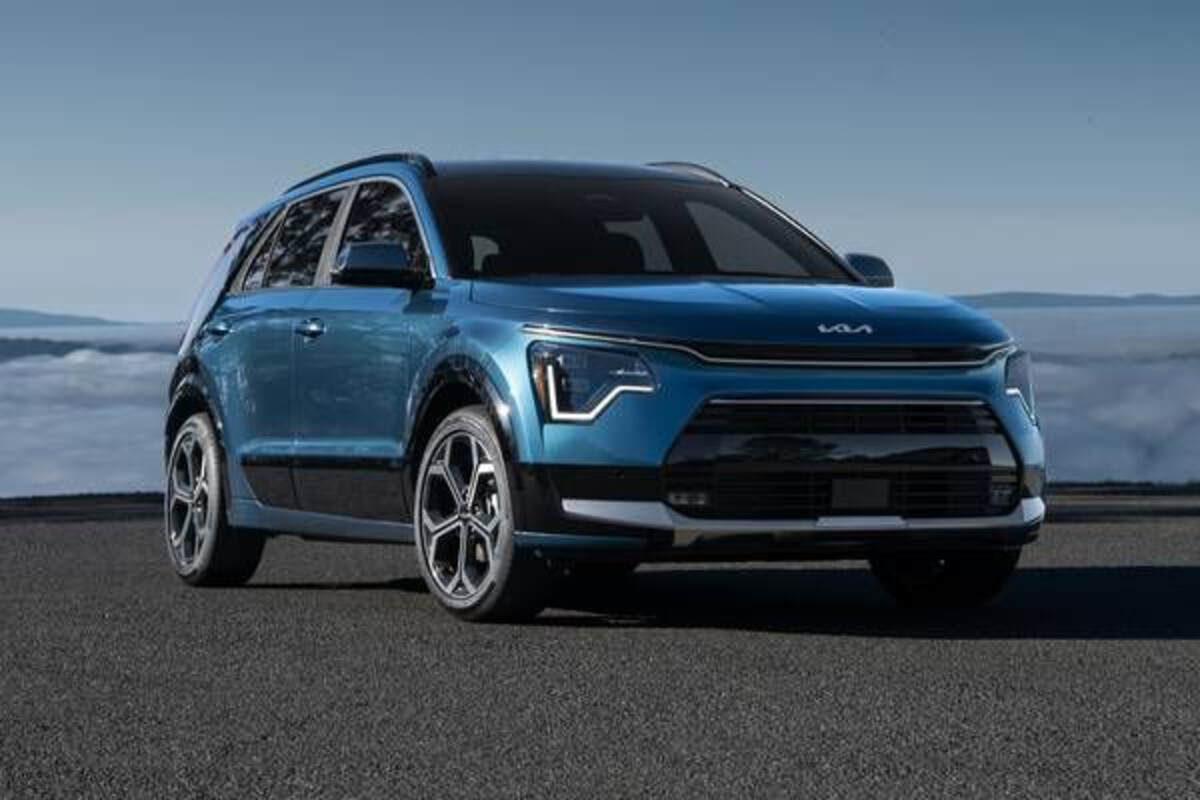
The battery management system includes both heating and cooling capabilities, ensuring consistent electric motor performance regardless of weather conditions.
During cold starts, the system maintains sufficient battery charge for extended electric-only operation, allowing passengers to enjoy immediate cabin heating without engine operation.
One of the most significant advantages of the Niro’s design is its elevated seating position and improved visibility, which allows for more efficient driving patterns that maximize hybrid system effectiveness.
The vehicle’s commanding view of traffic conditions enables drivers to anticipate traffic flow and optimize energy recovery through regenerative braking. This capability is particularly valuable during cold starts, when maximizing electric-only operation provides the greatest fuel economy benefits.
The Niro Hybrid incorporates Kia’s advanced Drive Mode Select system, which includes an Eco mode specifically calibrated for maximum fuel efficiency during cold starts.
In Eco mode, the system prioritizes electric-only operation for extended periods, while also optimizing climate control and accessory power consumption to minimize battery drain.
The system can maintain electric-only operation for up to three miles under ideal conditions, eliminating fuel consumption during initial driving phases.
Kia’s innovative regenerative braking system in the Niro features paddle shifters that allow drivers to adjust regenerative intensity on demand. This capability is particularly valuable during cold starts, when increased regenerative braking can quickly replenish battery charge while providing a familiar engine braking feel.
The system’s multiple regenerative levels allow drivers to optimize energy recovery for specific driving conditions and personal preferences. The Niro’s advanced aerodynamic design includes active aerodynamic elements that optimize efficiency during different driving phases.
During cold starts, the system prioritizes minimal aerodynamic drag to reduce power requirements for initial acceleration. The vehicle’s sophisticated underbody paneling and optimized wheel well designs contribute to exceptional aerodynamic efficiency that provides particular benefits during cold weather driving when air density is increased.
5 Gas Guzzlers with Highest Fuel Consumption
These thirsty performance machines and luxury SUVs consume alarming amounts of fuel during their extended warmup cycles, with cold-start penalties that can easily burn through significant fuel before reaching optimal operating temperature.
High-displacement V8 and supercharged engines require rich fuel mixtures and extended idle times to protect their sophisticated powertrains during cold operation, creating perfect storms of consumption during morning startups.
Massive SUVs with twin-turbo powerplants and performance-tuned vehicles with aggressive engine mapping demand prolonged warmup periods that can consume more fuel in five minutes than efficient cars use for entire short trips.
These vehicles’ combination of large displacement engines, aggressive tuning, and luxury features creates expensive cold-weather operation that makes every winter morning a costly proposition.
Their computer-controlled fuel injection systems flood cylinders with extra gasoline to ensure smooth operation, resulting in fuel consumption rates that can exceed highway cruising during those critical first minutes of operation.
1. Mercedes-Benz AMG G63 (2024-2025)
The Mercedes-Benz AMG G63 was “the worst-performing vehicle of the more than 1,200 models assessed by Greener Cars and has an annual fuel cost over $4,000”, with an MSRP of around $184,000.
This iconic luxury SUV represents the ultimate expression of performance and luxury, albeit at an extraordinary cost in fuel consumption that reflects its uncompromising approach to power and capability.
The AMG G63 is powered by a hand-built 4.0-liter twin-turbocharged V8 engine that produces an astounding 577 horsepower and 627 lb-ft of torque.
This massive powerplant enables the boxy SUV to accelerate from 0-60 mph in just 4.5 seconds, a remarkable achievement for a vehicle weighing over 5,500 pounds.
However, this performance comes at the cost of fuel economy ratings that hover around 13 mpg city and 15 mpg highway, making it one of the thirstiest vehicles available in the luxury segment.
The G63’s fuel consumption is exacerbated by its deliberately retro design philosophy, which prioritizes iconic styling over aerodynamic efficiency.
The vehicle’s boxy, upright profile creates significant wind resistance, particularly at highway speeds where aerodynamic drag becomes the primary factor affecting fuel consumption.
The coefficient of drag exceeds 0.50, nearly double that of modern efficient vehicles, resulting in exponentially increased fuel consumption at higher speeds. Mercedes-AMG’s performance-oriented calibration prioritizes immediate throttle response and maximum power delivery over fuel efficiency.
The engine management system maintains rich fuel mixtures to ensure optimal performance under all conditions, while the sophisticated all-wheel-drive system continuously monitors traction and adjusts power delivery to maintain maximum grip. These performance-oriented systems consume additional fuel through parasitic losses and increased mechanical complexity.

The G63’s luxury appointments contribute significantly to its fuel consumption through increased weight and electrical demands. The vehicle features premium materials throughout the interior, including hand-stitched leather, real wood trim, and premium sound systems that add hundreds of pounds to the overall weight.
Additionally, the extensive electrical systems required for luxury features create constant electrical loads that the alternator must overcome, increasing engine load and fuel consumption.
The AMG performance exhaust system, while providing an intoxicating soundtrack, creates significant back pressure that impacts engine efficiency.
The system’s complex valve arrangements and large-diameter piping are designed for maximum sound enhancement rather than optimal flow efficiency.
While this approach delivers the dramatic exhaust note expected from an AMG vehicle, it requires additional fuel to overcome the increased exhaust restriction.
The G63’s advanced suspension system, featuring adaptive dampers and multiple drive modes, provides exceptional ride quality and off-road capability but adds significant weight and complexity.
The system’s constant adjustments require hydraulic pressure that creates parasitic losses, while the additional hardware adds approximately 200 pounds compared to conventional suspension systems.
These luxury and performance features, while enhancing the driving experience, contribute meaningfully to the vehicle’s exceptional fuel consumption.
The all-wheel-drive system in the G63 features three locking differentials and advanced traction management that provide exceptional off-road capability but create constant drivetrain losses.
Even during normal highway driving, the system maintains readiness for immediate power transfer, resulting in mechanical friction and pumping losses that continuously impact fuel economy.
The sophisticated transfer case and differential systems, while providing unmatched capability, consume additional fuel through their complex mechanical operations.
2. Bugatti Chiron Pur Sport (2024-2025)
The 1500-hp Bugatti Chiron Pur Sport gets 8 mpg in the city according to EPA estimates, representing the end of automotive performance and the corresponding fuel consumption that accompanies such extraordinary capability.
The Chiron Pur Sport exists in a rarified atmosphere where fuel economy considerations are completely secondary to the pursuit of ultimate automotive performance.
The Chiron Pur Sport is powered by an 8.0-liter quad-turbocharged W16 engine that produces an astounding 1,479 horsepower and 1,180 lb-ft of torque.
This massive powerplant represents one of the most complex and powerful engines ever installed in a road-legal vehicle, featuring 16 cylinders arranged in a unique W configuration with four turbochargers providing forced induction.
The engine’s fuel consumption is proportional to its extraordinary power output, requiring premium fuel delivered through a sophisticated injection system.
The Pur Sport variant of the Chiron has been optimized specifically for track performance, with aerodynamic modifications that prioritize downforce and stability over fuel efficiency.
The massive rear wing, aggressive front splitter, and extensive underbody aerodynamics create significant drag at highway speeds, resulting in fuel consumption that increases exponentially with velocity. At the vehicle’s top speed capability, fuel consumption can exceed one gallon per minute of operation.
Bugatti’s approach to engine management prioritizes instantaneous throttle response and maximum power delivery across the entire rev range. The sophisticated engine control systems maintain optimal fuel mixtures for performance under all conditions, with multiple fuel pumps and high-pressure injection systems ensuring adequate fuel delivery even under extreme acceleration.
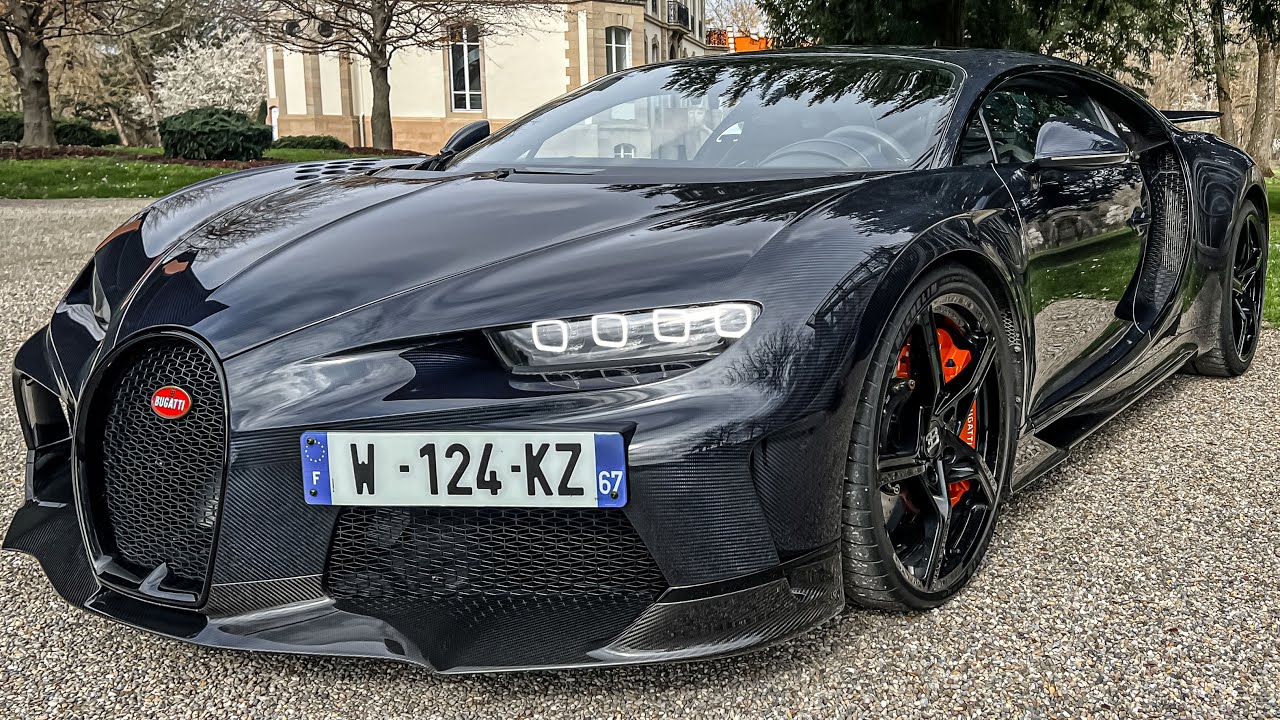
The engine’s 16 fuel injectors and complex fuel rail system consume substantial amounts of premium gasoline to maintain the rich mixtures required for maximum power output.
The Chiron Pur Sport’s advanced all-wheel-drive system features sophisticated torque vectoring and traction management that provide exceptional grip and handling but create significant parasitic losses.
The system continuously monitors wheel speeds, steering input, and vehicle dynamics to optimize power delivery, requiring constant adjustment of clutch pressures and differential settings.
These continuous adjustments consume additional fuel through hydraulic and electronic systems that support the drivetrain’s operation. The vehicle’s carbon fiber construction, while reducing weight compared to traditional materials, incorporates extensive cooling systems required to manage the heat generated by the massive engine.
The cooling system features multiple radiators, intercoolers, and oil coolers that create significant aerodynamic drag and require substantial power to operate the associated cooling fans. These cooling requirements become particularly demanding during high-performance driving, further increasing fuel consumption.
The Chiron Pur Sport’s transmission system features a sophisticated seven-speed dual-clutch design that provides lightning-fast gear changes but requires constant hydraulic pressure to maintain clutch engagement.
The transmission’s oil pumps and control systems create parasitic losses that consume additional fuel, while the rapid gear changes optimized for performance rather than efficiency contribute to overall fuel consumption.
The vehicle’s extensive use of active aerodynamics, including adjustable front and rear spoilers, provides exceptional high-speed stability but requires constant electrical power for adjustment motors and control systems.
These active systems continuously adjust based on speed and driving conditions, consuming electrical power that must be generated by the engine-driven alternator, adding to overall fuel consumption.
3. Lamborghini Aventador SVJ (2024-2025)
The Lamborghini Aventador SVJ represents the pinnacle of naturally aspirated V12 performance, delivering extraordinary power and sound while consuming fuel at rates that reflect its uncompromising pursuit of automotive excellence.
This track-focused supercar achieves approximately 9 mpg city and 15 mpg highway, figures that reflect the vehicle’s prioritization of performance over efficiency considerations.
The Aventador SVJ is powered by a magnificent 6.5-liter naturally aspirated V12 engine that produces 759 horsepower and 531 lb-ft of torque. This massive engine represents one of the last great naturally aspirated powerplants in the supercar segment, delivering power through atmospheric induction rather than forced induction systems.
The engine’s fuel consumption reflects its displacement and high-performance calibration, requiring premium fuel delivered through a sophisticated injection system optimized for maximum power rather than efficiency.
Lamborghini’s approach to engine management prioritizes immediate throttle response and the dramatic sound characteristic of naturally aspirated V12 engines.
The engine control systems maintain rich fuel mixtures to ensure optimal combustion under all conditions, while the sophisticated variable valve timing and intake systems optimize airflow for maximum power output.
These performance-oriented calibrations result in fuel consumption that increases dramatically under acceleration and high-RPM operation. The SVJ’s aggressive aerodynamic package, featuring the innovative Aerodinamica Lamborghini Attiva (ALA) system, provides exceptional downforce and cornering capability but creates significant drag that impacts fuel consumption.
The active aerodynamic elements continuously adjust based on driving conditions, optimizing downforce for cornering while attempting to reduce drag during straight-line acceleration.

However, even in low-drag configuration, the vehicle’s aerodynamic profile creates substantial wind resistance that increases fuel consumption exponentially with speed.
The Aventador SVJ’s all-wheel-drive system features sophisticated torque vectoring that provides exceptional traction and handling but creates parasitic losses throughout the drivetrain.
The system continuously monitors driving conditions and adjusts power distribution between front and rear wheels, while also providing limited-slip differential action to optimize traction.
These constant adjustments require hydraulic pressure and electronic control systems that consume additional fuel through parasitic losses. The vehicle’s carbon fiber construction incorporates extensive cooling systems required to manage the heat generated by the high-performance V12 engine.
Multiple radiators, oil coolers, and intercoolers create aerodynamic drag while requiring substantial power to operate associated cooling fans. The sophisticated thermal management becomes particularly demanding during track use, where sustained high-performance operation generates extreme heat loads that require maximum cooling system operation.
Lamborghini’s advanced suspension system features magnetic dampers and multiple drive modes that provide exceptional handling characteristics but add weight and complexity that impact fuel consumption.
The system’s constant adjustments require electrical power for solenoid operation and control systems, while the additional hardware adds weight that must be accelerated and decelerated during dynamic driving.
These performance-enhancing systems, while crucial for the vehicle’s capabilities, contribute to overall fuel consumption. The SVJ’s sophisticated transmission system utilizes a single-clutch automated manual design that provides dramatic gear changes and direct mechanical connection but requires significant hydraulic pressure for clutch operation.
The transmission’s pumps and control systems create parasitic losses, while the aggressive shift calibrations optimized for performance rather than smoothness contribute to fuel consumption during dynamic driving conditions.
4. Rolls-Royce Cullinan Black Badge (2024-2025)
The Rolls-Royce Cullinan Black Badge represents the ultimate expression of luxury SUV excess, combining extraordinary opulence with performance capability that results in fuel consumption figures reflecting its uncompromising approach to luxury motoring.
This ultra-luxury SUV achieves approximately 12 mpg city and 18 mpg highway, figures that reflect the vehicle’s prioritization of comfort, capability, and presence over efficiency considerations.
The Cullinan Black Badge is powered by a twin-turbocharged 6.75-liter V12 engine that produces 591 horsepower and an astounding 664 lb-ft of torque.
This massive powerplant provides effortless acceleration and refinement while consuming fuel at rates proportional to its displacement and luxury-oriented calibration.
The engine’s sophisticated fuel injection and management systems prioritize smoothness and immediate response over efficiency, resulting in fuel consumption that reflects the vehicle’s luxury positioning.
Rolls-Royce’s approach to engine calibration prioritizes absolute refinement and effortless power delivery across all operating conditions. The engine management systems maintain rich fuel mixtures to ensure smooth operation and immediate throttle response, while the sophisticated turbocharging system provides maximum torque at low RPM for effortless acceleration.
These luxury-oriented calibrations result in fuel consumption that prioritizes performance and refinement over efficiency considerations. The Cullinan’s imposing physical presence, standing over six feet tall with a commanding road presence, creates significant aerodynamic challenges that impact fuel consumption.
The vehicle’s upright profile and substantial frontal area create wind resistance that increases exponentially with speed, while the large wheels and tires necessary for its luxury positioning contribute additional rolling resistance.
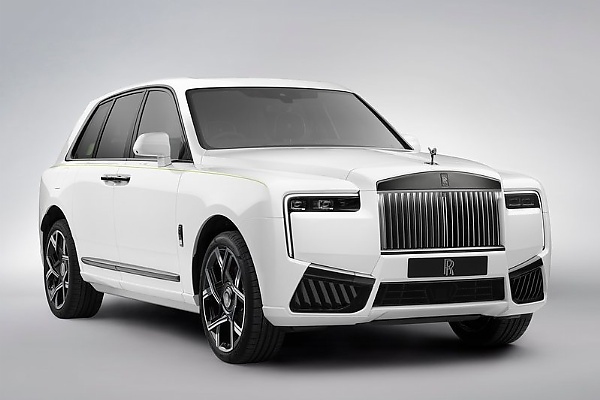
The vehicle’s coefficient of drag, while optimized for luxury rather than efficiency, results in substantial fuel consumption at highway speeds. The Black Badge variant incorporates performance enhancements that further impact fuel consumption, including sport-tuned suspension, upgraded brakes, and performance-oriented calibrations.
These modifications prioritize dynamic capability over efficiency, resulting in increased fuel consumption during both normal and spirited driving conditions. The enhanced performance systems require additional cooling and support systems that create parasitic losses throughout the vehicle’s operation.
The Cullinan’s extensive luxury features contribute significantly to fuel consumption through increased weight and electrical demands. The vehicle features premium materials throughout, including hand-crafted leather, real wood veneers, and premium sound systems that add substantial weight.
Additionally, the extensive electrical systems required for luxury features create constant loads that the alternator must overcome, increasing engine load and fuel consumption during all driving conditions.
The sophisticated all-wheel-drive system provides exceptional traction and capability but creates drivetrain losses that impact fuel economy. The system continuously monitors driving conditions and adjusts power delivery to maintain optimal traction, while also providing the capability for serious off-road adventures.
These systems require hydraulic pressure and electronic control that consume additional fuel through parasitic losses, even during normal highway driving.
The Cullinan’s advanced air suspension system provides exceptional ride quality and adjustability, but requires constant electrical power for compressor operation and system control.
The system continuously adjusts ride height and damping characteristics based on driving conditions and surface irregularities, requiring electrical power that must be generated by the engine-driven alternator. These luxury and comfort systems, while essential for the vehicle’s character, contribute meaningfully to overall fuel consumption.
5. Ford F-450 Super Duty (2024-2025)
The Ford F-450 Super Duty represents the extreme end of heavy-duty truck capability, designed for maximum towing and payload capacity rather than fuel efficiency.
This commercial-grade truck achieves approximately 10 mpg city and 14 mpg highway when equipped with the diesel engine, figures that reflect its prioritization of capability over fuel economy considerations.
The F-450 Super Duty is available with multiple engine options, including a 6.7-liter Power Stroke turbo-diesel V8 that produces 475 horsepower and an extraordinary 1,050 lb-ft of torque.
This massive powerplant provides exceptional towing capability up to 37,000 pounds while consuming fuel at rates proportional to its displacement and heavy-duty calibration.
The engine’s sophisticated fuel injection and turbocharging systems prioritize maximum torque and reliability under extreme loads rather than efficiency optimization.
Ford’s approach to engine calibration for the F-450 prioritizes maximum capability and durability under extreme operating conditions. The engine management systems maintain fuel delivery strategies optimized for heavy-duty operation, including rich mixtures during high-load conditions and aggressive cooling strategies that ensure reliability.
These heavy-duty calibrations result in fuel consumption that reflects the vehicle’s commercial-grade capabilities rather than passenger vehicle efficiency expectations.
The F-450’s substantial physical dimensions, including dual rear wheels and extended frame lengths, create significant aerodynamic and mechanical challenges that impact fuel consumption.
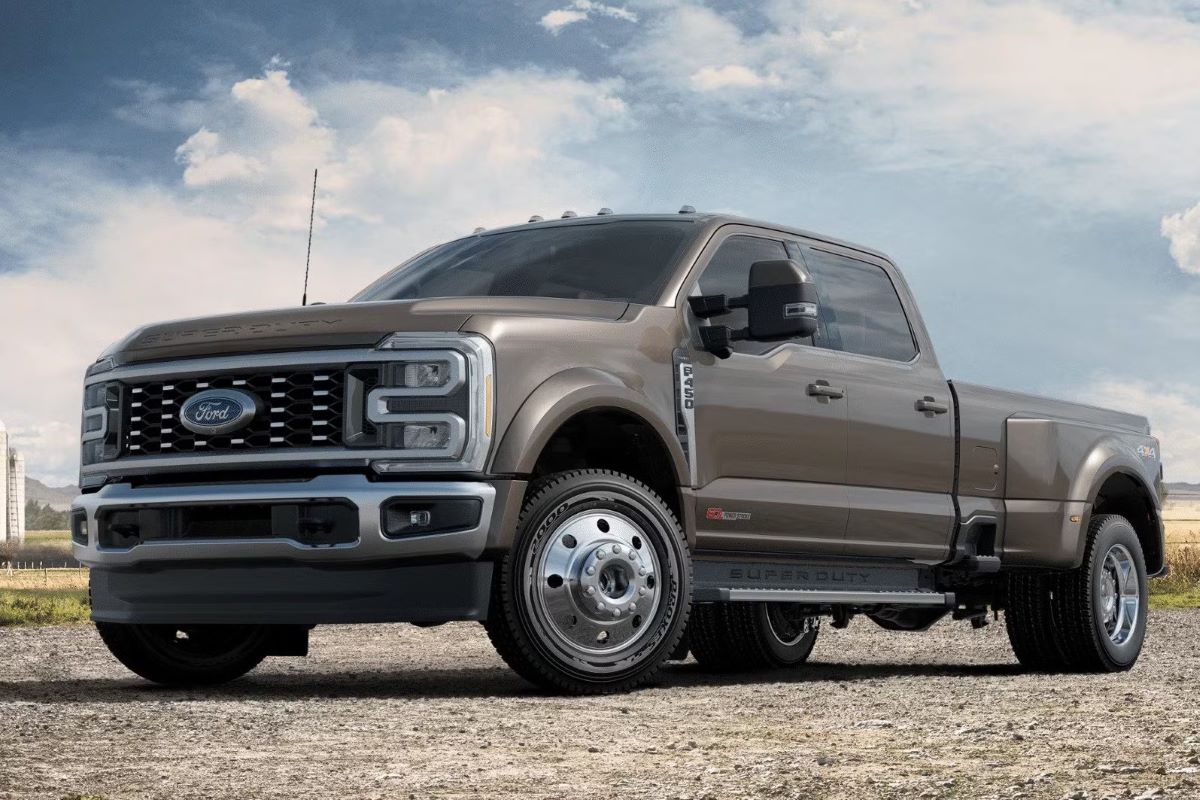
The vehicle’s high profile and substantial frontal area create wind resistance that becomes particularly pronounced when towing large trailers, while the dual rear wheels necessary for load capacity create additional rolling resistance.
The vehicle’s gross vehicle weight rating exceeding 14,000 pounds requires substantial power for acceleration and highway operation. The Super Duty’s heavy-duty transmission system utilizes a sophisticated ten-speed automatic design that provides optimal gear ratios for towing but creates parasitic losses through its complex hydraulic control systems.
The transmission’s multiple clutch packs and sophisticated control systems require constant hydraulic pressure, while the torque converter and internal pumps create losses that impact fuel economy. These heavy-duty components, while essential for the vehicle’s capability, contribute to overall fuel consumption.
The F-450’s four-wheel-drive system features heavy-duty components designed for commercial use, but creates drivetrain losses that impact fuel economy.
The system includes a two-speed transfer case, locking differentials, and heavy-duty axles that provide exceptional traction capability but create mechanical friction and pumping losses. Even during normal highway driving, these heavy-duty components create parasitic losses that continuously impact fuel consumption.
Ford’s sophisticated trailer management systems provide exceptional towing capability but require additional electrical and hydraulic systems that consume fuel through parasitic losses.
The integrated trailer brake controller, sway control systems, and advanced towing modes require constant monitoring and adjustment of vehicle systems, consuming electrical power that must be generated by the engine-driven alternator.
These capability-enhancing systems, while crucial for safe towing operation, contribute to overall fuel consumption. The F-450’s heavy-duty cooling systems, required for sustained heavy-duty operation, create significant aerodynamic drag and require substantial power for fan operation.
Multiple radiators, intercoolers, and oil coolers provide the thermal management necessary for heavy-duty use but create wind resistance and require electrical power for cooling fan operation.
These cooling requirements become particularly demanding during towing operations, further increasing fuel consumption under load conditions.
Also Read: 5 Brands With Top Security Ratings and 5 With Zero Theft Prevention Focus

